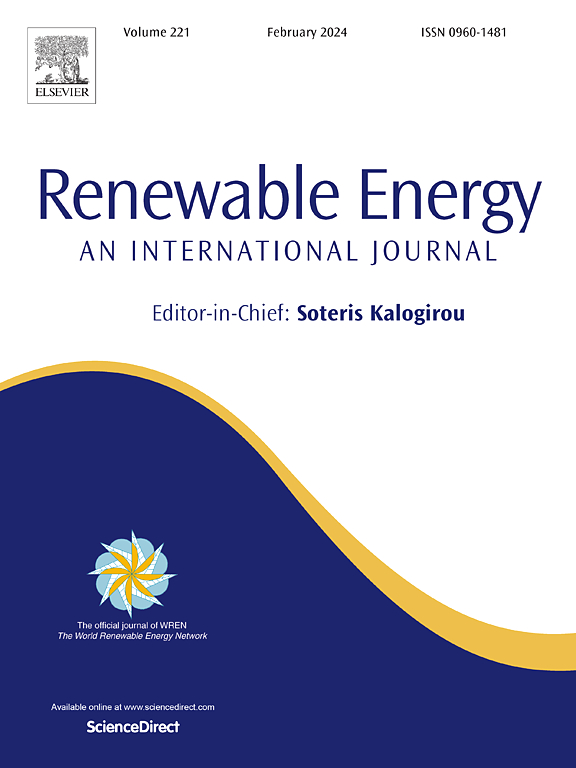结合Ni-S键强化欧姆结和硫空位的同时高效光催化诺氟沙星降解和H2生成
IF 9.1
1区 工程技术
Q1 ENERGY & FUELS
引用次数: 0
摘要
双功能光催化剂(DFP)在将太阳能转化为可再生氢气同时修复环境污染方面显示出显著的优势。为了实现光生载流子的快速分离和高利用率,在DFP异质结构中建立稳健的原子级相互作用是至关重要的。在此背景下,合成了Ni2P/ds-Zn3In2S6二元光催化剂,用于诺氟沙星同步降解和制氢。金属Ni2P被化学锚定在ds- Zn3In2S6表面,以降低界面电子转移的能垒。在Zn3In2S6晶格内设计了硫空位,以促进电荷载流子的隔离。结果表明,利用Ni2P助催化剂、界面Ni-S键增强欧姆结和硫缺陷的协同作用,复合光催化剂的H2释放量(2.32 mmol g−1 h−1)比原始Zn3In2S6提高了19.17倍,诺氟沙星分解量(98.38%)提高了2.84倍。根据福井函数计算和液相色谱-质谱分析结果,提出了光催化诺氟沙星降解的4种可行途径。预计在这项工作中概述的协作策略将为高性能DFP的设计提供有价值的见解。本文章由计算机程序翻译,如有差异,请以英文原文为准。
Integrating interfacial Ni-S bond-strengthened ohmic junctions with sulfur vacancies for simultaneous efficient photocatalytic norfloxacin degradation and H2 generation
Dual-functional photocatalysts (DFP) have shown remarkable advantages in converting solar energy into renewable H2 while simultaneously remediating the environmental pollution. To achieve rapid separation and high utilization of the photogenerated charge carriers, it is crucial to establish robust atom-level interactions within a DFP heterostructure. In this context, a binary Ni2P/ds-Zn3In2S6 photocatalyst was synthesized for synchronous norfloxacin degradation and H2 production. Metallic Ni2P was chemically anchored onto the ds- Zn3In2S6 surface to reduce the energy barrier for interfacial electron transfer. Sulfur vacancies were engineered within the Zn3In2S6 lattice to facilitate the isolation of charge carriers. Resultantly, the composite photocatalyst, leveraging the synergistic effects of the Ni2P cocatalyst, interfacial Ni-S bond-reinforced ohmic junctions and sulfur defects, exhibited 19.17-fold enhancements in H2 release (2.32 mmol g−1 h−1) and 2.84-fold improvements in norfloxacin decomposition (98.38%) compared to pristine Zn3In2S6. On the ground of Fukui function calculations and liquid chromatography-mass spectrometry results, four plausible pathways for photocatalytic norfloxacin degradation were proposed. It is anticipated that the collaborative strategy outlined in this work will provide valuable insights into the design of high-performance DFP.
求助全文
通过发布文献求助,成功后即可免费获取论文全文。
去求助
来源期刊

Renewable Energy
工程技术-能源与燃料
CiteScore
18.40
自引率
9.20%
发文量
1955
审稿时长
6.6 months
期刊介绍:
Renewable Energy journal is dedicated to advancing knowledge and disseminating insights on various topics and technologies within renewable energy systems and components. Our mission is to support researchers, engineers, economists, manufacturers, NGOs, associations, and societies in staying updated on new developments in their respective fields and applying alternative energy solutions to current practices.
As an international, multidisciplinary journal in renewable energy engineering and research, we strive to be a premier peer-reviewed platform and a trusted source of original research and reviews in the field of renewable energy. Join us in our endeavor to drive innovation and progress in sustainable energy solutions.
 求助内容:
求助内容: 应助结果提醒方式:
应助结果提醒方式:


